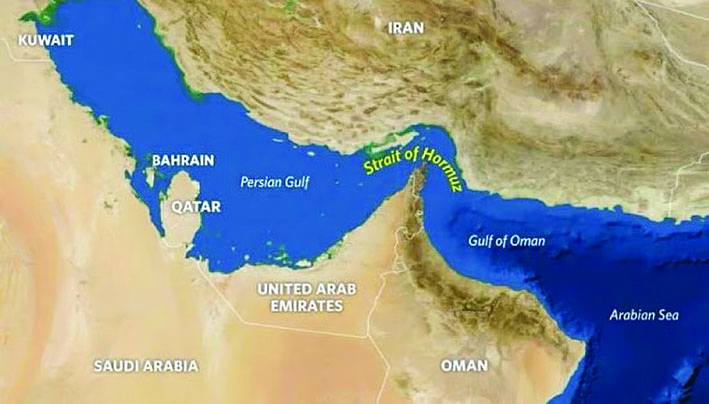
Tehran: Iran’s Parliament approved a proposal to close the Strait of Hormuz, state-owned Press TV reported on June 22. The final decision now rests with the Supreme National Security Council. This move follows a US strike on Iranian nuclear facilities, marking Washington’s official entry into the ongoing Iran-Israel conflict. While the strikes were limited to infrastructure and reportedly caused no radioactive contamination, they have heightened tensions in West Asia and increased volatility in global energy markets.
Iran has threatened retaliation, including possible attacks on US military installations in the Gulf. The threat to block the Strait of Hormuz, a vital oil transit route, has grown more credible. Asked about the Strait, Iran’s Foreign Minister Seyed Abbas Aragchi said that “a variety of options” are available with Iran, adding that the country would defend itself by all means necessary.
Speaking at the United Nations Human Rights Council (UNHRC) on June 20, Aragchi said, “Our peaceful nuclear facilities have also been targeted despite their being under full monitoring of the IAEA”. He added, “Israel attacks on nuclear facilities are grave war crimes, given also the danger of environmental and health catastrophe as the result of radiological leakage.”
The Strait of Hormuz connects the Persian Gulf to the Gulf of Oman and the Arabian Sea. At its narrowest, it is 33 km wide, with only 3 km allocated to each shipping direction. Around 20 million barrels of oil, which accounts for nearly one-fifth of global daily supply, and significant quantities of liquefied natural gas pass through it.
According to the US Energy Information Administration (EIA), flows through the Strait accounted for more than one-quarter of global seaborne oil trade and one-fifth of oil and petroleum product consumption in 2024 and early 2025, making it central to global energy trade. Saudi Arabia and the UAE have developed limited overland pipeline alternatives, but these cover less than half of Hormuz’s capacity. A full or partial closure would disrupt global supply chains and drive up shipping costs and insurance premiums.
Brent crude rose over 10 per cent to $77 a barrel following the US strikes. Market analysts expect prices could rise further, potentially reaching $83 or even $90 if the Strait is closed. The spread between Brent and WTI crude has also widened.
The escalation is expected to cause major disruptions in crude oil supply, with global benchmarks reacting accordingly. Gold, often seen as a safe-haven asset during periods of heightened geopolitical risk, has rebounded over 2 per cent and may approach previous record highs around $3,500 an ounce. Silver, which has significant industrial applications, may not see similar gains. Rising energy costs could dampen industrial activity, weakening demand for silver and affecting its price trajectory.
According to US officials, the strikes were intended as a strategic warning aimed at reviving negotiations with Tehran. However, Iran has continued its missile attacks on Israel and has shown no indication of stepping back from confrontation.
Following Iran’s call for closing the Strait of Hormuz, US Secretary of State Marco Rubio urged China to use its influence with Tehran, calling any attempt to close the Strait “economic suicide”. Speaking to Fox News, Rubio said, “I encourage the Chinese government in Beijing to call them about that, because they heavily depend on the Straits of Hormuz for their oil.”
India imports nearly 90 per cent of its crude oil requirements. About two million barrels per day of this, out of 5.5 million, transits through the Strait of Hormuz. On Sunday evening, the government reassured the public that it is prepared for short-term disruptions.
Oil Minister Hardeep Singh Puri stated that India’s oil marketing companies have sufficient reserves and continue to receive supplies through multiple routes. “A large volume of our supplies do not come through the Strait of Hormuz now,” he posted on X.
Over the past few years, India has diversified its sources. Russian crude, which bypasses the Strait entirely, has grown to form about 38 per cent of India’s imports by May 2025, up from under 1 per cent in early 2022. However, diversification has its limits. Domestic crude prices remain closely aligned with global benchmarks, and oil continues to account for a significant portion, 15 to 25 per cent, of India’s monthly import bill. The impact of price shocks extends beyond trade. The current account deficit nearly doubled to 1.3 per cent of GDP in FY25, up from 0.7 per cent the previous year, driven largely by higher import costs and weakening external demand.





